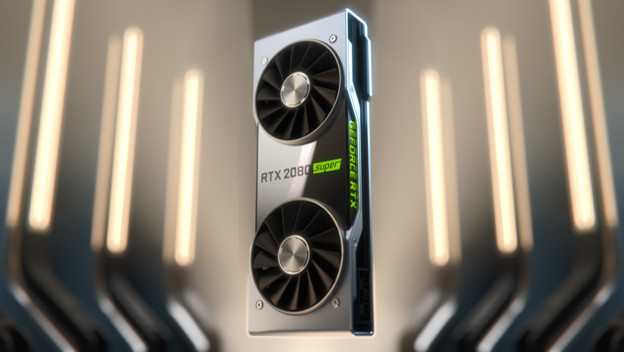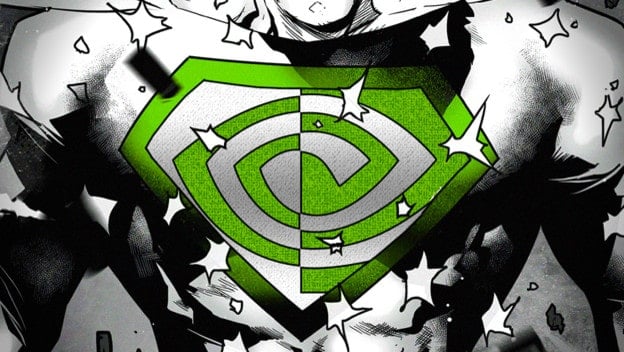New technologies are being introduced every day. AI is getting more powerful, Ray tracing is rendering games in new ways. Of course, things are getting real advanced with streaming capabilities and technologies. Having better processors, graphics cards and builds are going to make it easier to keep up. One step toward getting settled is making sure your rig has the right bits and pieces to keep up. NVIDIA’s line of Geforce RTX graphics cards can be there to save the day. Whether someone goes with $399 Geforce RTX 2060 Super , $499 Geforce RTX 2070 Super , or $699 Geforce RTX 2080 Super , each one will may help provide a step up from the standard variants, with the RTX 2060 Super sometimes seeming comparable to an original RTX 2070 and the RTX 2070 Super being akin to the RTX 2080.
When first looking at these, it’s good to know some of the basics that all three models guarantee. These are graphics cards that are ready to provide high-dynamic-range imaging and support 4K resolution. All three cards give people access to the programs NVIDIA is known for. Getting the Geforce Experience companion app gives you the tools to share and stream. NVIDIA Ansel gives people photo modes in games that wouldn’t already have them, letting you capture moments and even have 360 degree shots in some supported games. You can apply filters with NVIDIA Freestyle. Its NVIDIA Shadowplay helps with broadcasting and recording, so NVIDIA Highlights can automatically record what matters and you could easily broadcast with OBS or whichever software you prefer effortlessly. NVIDIA GameWorks also means you can get Game Ready driver updates that NVIDIA prepared with developers so your Geforce RTX Super cards are immediately ready to make your games look their best.
All three of these are also Turing GPU architecture cards, which means that certain commonalities will be there to provide specific performance standards. All three have dedicated ray tracing, to help lighting make real-time generated images look incredibly real and complex. There’s variable rate shading, which adds depth without reducing quality. The NVIDIA deep learning super sampling (DLSS) uses AI in image processing to reduce strain and provide frame rates that are higher and more stable. (It is already being used in games like Monster Hunter: World to great effect, possibly making the creatures within look even smoother and more realistic.) This kind of technology means DLSS and ray tracing can work together in one card, rather than having multiple graphics cards linked together, thanks to its concurrent processing.
Seeing what’s there (and knowing that all of these will have the Direct X12 support and G-Sync tech needed to offer 240Gz refresh rates) means people can start focusing on what is most important to them. They can look at their budgets and decide which card could be best for their needs and money. The Geforce RTX 2060 Super might be the one people look at first, because it’s $399 and of course seeing if the most affordable model is an option is a possibility. As far as the basics go, its GPU Engine Specs have 2176 NVIDIA CUDA cores, 41T RTX-OPS, 6 giga rays/s, a 1650MHz boost clock, and 1470MHz base clock. It has 14GBps memory speed, uses a standard 8GB GDDR6 memory configuration, has 448GB/sec memory bandwith, and 256-bit memory interface width. While it isn’t NVIDIA NVLink SLI-ready, it can support up to four monitors, can go up to a 7680×4320 resolution, and has DisplayPort, DVI-DL, and HDMI standard display connectors. When compared to the RTX 2060, it speeds things up by going from 1920 CUDA cores to 2176, going from 6GB GDDR6 memory to 8GB, and is at least 15% faster than its immediate predecessor. When compared to the original RTX 2070, it has only 128 fewer CUDA cores and the same memory, making it much more comparable at a lower price point.

Someone might see that and wonder how the next step up, the Geforce RTX 2070 Super might compare. As far as benchmarks go, people might see it at least 10% faster, perhaps closer to 13% or 15%, than the Geforce RTX 2060 Super. Its lighting and handling effects and handling are all slightly faster, meaning your games will look a bit better and there will be higher framerates possible. As far as exact details go, its GPU engine has 2560 NVIDIA CUDA cores, 52T RTX-OPS, 7 giga rays/s, 1770MHz boost clock, and 1605MHz base clock. It has the same memory specs as the Geforce RTX 2060 Super, so you have 14 GBps memory speed, 8GB GDDR6 memory config, a 256-bit memory interface width, 448 GB/sec memory bandwidth, can go up to a 7680×4320 resolution, has four multi monitor support, and has DisplayPort, DVI-DL, and HDMI standard display connectors. Unlike the 2060 Super, it can use the NVIDIA RTX NVLink Bridge for NVIDIA NVLink SLI-ready support. It performs about 10% better than the original Geforce RTX 2070 model. This is due to it having 2560 CUDA cores instead of 2304, a 215W power draw now, and higher base and boost clock speeds. When placed up against the RTX 2080, it has only 384 fewer CUDA cores, its boost clock speed is higher than the older model’s 1710MHz, and the base clock is much higher than its 1515MHz. Considering the Founders’ Edition of the RTX 2080 was $1199, compared to this $499 card, it is quite a different.

As for the Geforce RTX 2080 Super, it’s a situation where people are voyaging into uncharted territory. It isn’t quite as souped-up up as the RTX 2080 Ti, which has 4352 NVIDIA CUDA cores, as the RTX 2080 Super has 3072. However, that’s 128 more than the current RTX 2080. This graphics card has 1650/1815 MHz base/boost clock, which is higher than the original RTX 2080’s 1515/1710 MHz and RTX 2080 Ti’s 1350/1545 MHz. It has 8 giga rays/s, like the RTX 2080, but has 63T RTX-OPS, compared to 57T RTX-OPS. It also has better memory specs than the original card, with its standard 8GB GDDR6, 15.5 GBps memory speed, and 496 GB/sec memory bandwidth. The original model had only 14 GBps and 448 GB/s with its 8GB GDDR6 config. Like the RTX 2070 Super, it can use the NVIDIA RTX NVLink Bridge to be NVIDIA NVLink SLI-ready, its maximum resolution is 7680×4320, it has DisplayPort, HDMI, DVI-DL standard display connectors, and has four multi monitor support. This all means that, while it would not hit the same heights as the RTX 2080 Ti, it would outperform both the RTX 2080 and the RTX 2070 Super options with its 24 PolyMorph engines, 192 texture units, 384 Tensor cores, 3072 CUDA cores, and memory with a higher data rate. That 10% faster memory could help make a difference.
A hallmark of all three of these NVIDIA Geforce RTX Super cards is affordability. Each one is much less expensive than past models, making upgrading a less stressful prospect. But, the newest NVIDIA Geforce RTX 2080 Super Founders Edition could be among the best possibility at the price point. It is $699, which is $100 less than the $799 RTX 2080 Founders Edition and 5% faster and the same price as the base RTX 2080, but 10% faster. Considering how much more powerful it is than the RTX 2060 Super and RTX 2070 Super, it ends up being quite a deal for the money you are paying.

Of course, with all three of these there’s also the virtual reality component. VirtualLink is becoming the industry standard, to help with VR setup and make people’s setups future proof. While the VirtualLink USB Type-C port was not mandatory for the RTX 2060 and RTX 2070, the RTX 2060 Super, RTX 2070 Super, and RTX 2080 Super are all Turing GPU cards that have hardware support that follow the “VirtualLink Advance Overview.” (However, it is important to note that only the Geforce RTX 2080 Ti has the USB Type-C among its standard display connectors.) That means you’ll be better prepared to join the ranks of those who accept VR and what it can do for your games.
NVIDIA’s latest cards might look and feel like a real incremental step up. They aren’t as drastic of a jump as going from, say, a Geforce RTX 2080 to a 2080 Ti. However, it appears that each one is about looking at what past cards did, dropping the price a bit, and offering what older models could do at a more affordable figure. Each one including codes for Control and Wolfenstein: Youngblood , games that could take advantage of the NVIDIA DLSS and ray tracing for particle effects, fine details, and textures, could act as a way to see how each one performs in action rather immediately.

Also, as mentioned above, it’s important to take advantage of NVIDIA’s game ready drivers, which were just recently released for both these pack-in titles. Those are currently available on their website or the included app that can be set to auto-update your library of games. So “cheers!” too even more exciting and new hardware advancements from the Geforce line in the future, which seems to find absolutely NO wall they can’t smash through in 2019 and beyond!
